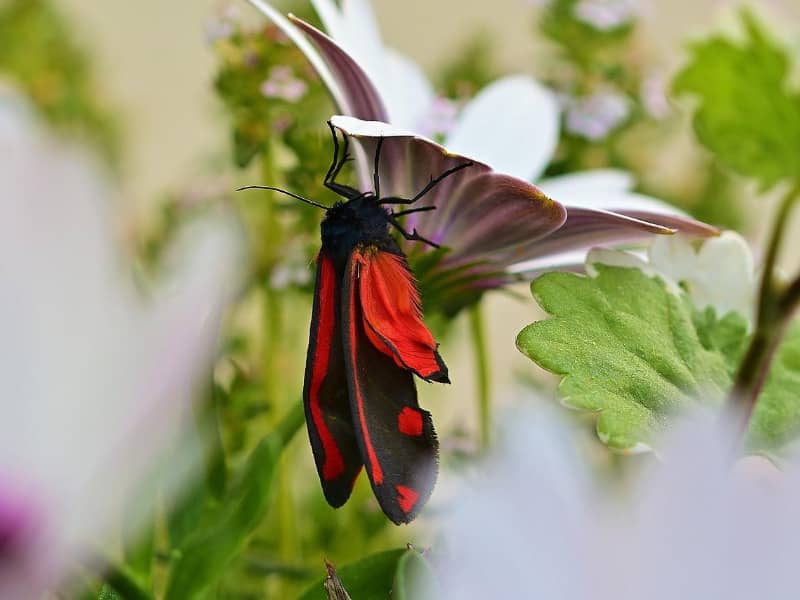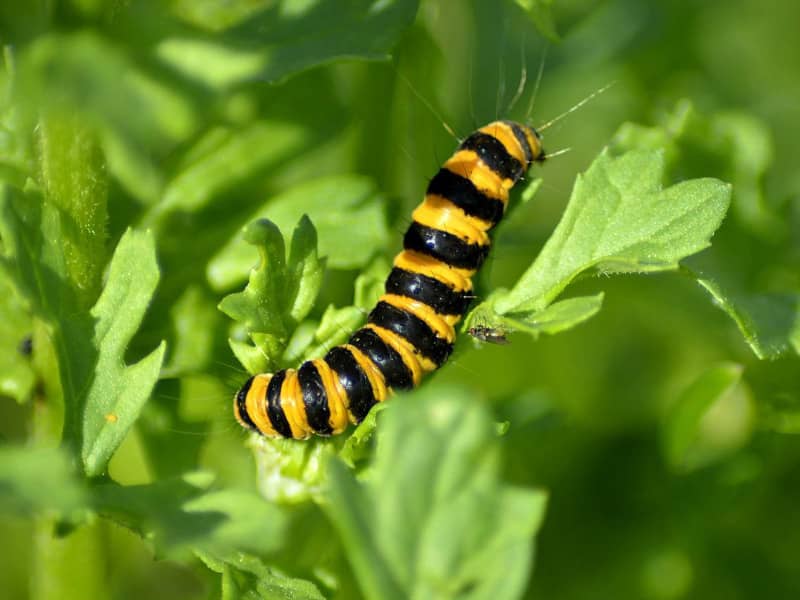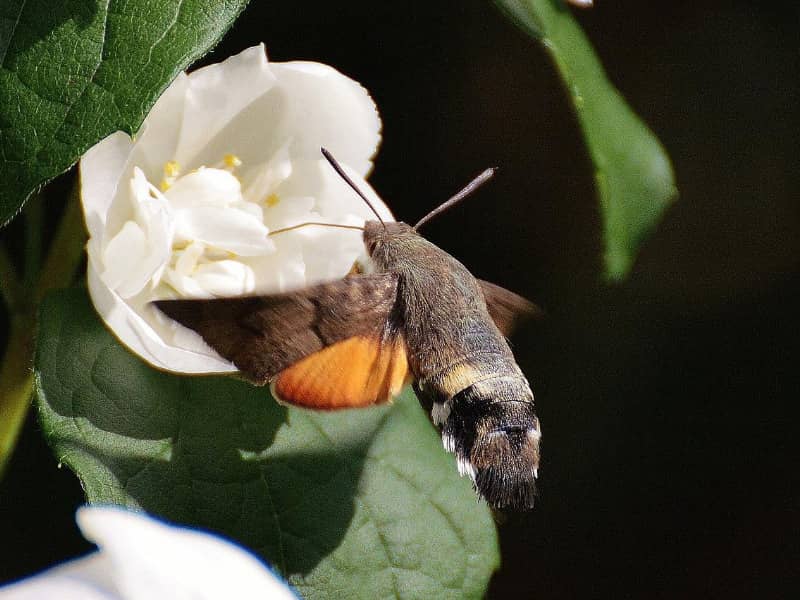
Scallop Bear
The scalloped bear is a beautiful butterfly with a black and red coloration. It is also called blood bear or crimson bear. It belongs to the family of moths and there again to the subfamily of bear moths. Here you can find out everything you need to know about the scabbard moth and why its striking markings are not a problem for it.
Scallop bear - its habitat
The scalloped bear prefers dry or only slightly moist areas as habitat, these can also have a steppe-like character. It can also be found in forest meadows, quarries and at the edges of flowing waters. The butterfly is native to the whole of Europe and has been found at altitudes of up to 1600 meters.
It prefers the south and thus the warmer areas in Europe. Originally from Europe, the scalloped butterfly was brought to Australia around 1930 and has spread there as well. Sporadically, the butterfly can also be found in Canada, USA and New Zealand. The blood bear prefers areas where alkaloid-rich plants are found.
These plants are poisonous to most animals and therefore they avoid contact with you. This is also the reason why the scallop butterfly can have a conspicuous coloring. While other conspicuously marked animals are often identified as prey by others, the butterfly can sit on its plants with peace of mind. In addition to the plants, the coloration also provides a warning signal.
Thus, there is also little or no danger to the laid eggs or the caterpillars as they grow.
Detect scallop bear
As a fully developed moth, the scalloped bear has a wingspan between 32 and 42 mm. Here a strong red-black coloration comes to the fore. This coloration signals inedibility to other animals, so the moth is reliably protected from predators. The basic color of the forewings is black and the hindwings are colored red.
On the forewings are two red dots at the end of the wings and the moth has two long red lines on the edge of the wings. The caterpillars have a striking yellow-black coloration that runs in a ring over the entire body. These caterpillars grow up to 30 mm in length and stay on the different varieties of greiseweed. These include the Jacob's-grass, water-grass, and swamp-grass.
The way of life
The nocturnal animals reproduce once a year, but sometimes an incomplete second generation develops. This incomplete generation manages to overwinter pupated in protected places and hatch the next spring. Egg-laying occurs in groups of 20 to 40 eggs on the above-described varieties of grassweed. There the caterpillars hatch and live together in larger groups on the plants.
Their striking black and yellow coloration protects them from predators. The greiseweed plant, which serves as the main food source, is poisonous to most animals. The caterpillars ingest this poison without becoming ill or suffering any other damage. The high concentration of poison in their bodies, ensures that a predator may die when eating the scabious caterpillar.

Scallop bear - the resume
The eggs of the scalloped bear are laid on the underside of deep-seated leaves in mirrors. Mirror means that the eggs are stuck close together the leaf. From the end of May the initially dark caterpillars hatch from the eggs and live together in a group. Only after a few weeks the caterpillars get the characteristic yellow-black ringed coloration.
With the moth it is noticeable that the female lays her eggs over a relatively long period of time. So it can happen that you can discover caterpillars in different stages of development on a large scallop plant. These observations can be made particularly well in the months of June and July. From the end of July the pupation of the first caterpillars begins and continues until the end of August.
These pupae overwinter in protected places and hatch in May and June of the following year. Then the life cycle of the scalloped bear begins anew.
Endangerment of the scallop bear
In many parts of Germany, the ragweed is considered highly endangered. Due to intensive agriculture and constant land consolidation, many habitats with Greiscraut have been destroyed. Fortunately, associations such as NABU are working to redesign the habitats and the Greiscraut, especially the Jacob's Greiscraut, can be found in greater numbers again.
Through these initiatives, scallops are reproducing and becoming more common in our landscape.
Author

-
Garden animal - A life with nature
Welcome to my animal blog! My name is Dirk and I am happy to take you on my journey through the fascinating world of animals and gardening.
Born 54 years ago, I have had an insatiable curiosity for the animal world around me since childhood. Although I have moved professionally in other industries, my true passion has always been animals and nature. It is remarkable how a small garden has become such an important part of my life.
Many of my fondest memories are associated with the animals that share our home. Whether it's the curious squirrels that scurry across the trees in the morning, the colorful variety of birds that visit our feeders, or the busy bees and butterflies that pollinate our flowers, every moment with them is invaluable to me.
This blog is my contribution to share my experiences, discoveries and insights with like-minded people. Here I will share stories of unforgettable encounters with animals, give tips on gardening and creating wildlife-friendly habitats, and take you on my journeys through nature.
Thank you so much for being here!
Cordial,
Dirk aka garden animal
Last posts
- 27. February 2024PetsVeganes Hundefutter – Grün und Gesund?
- 18. January 2024ChickensOregano für Hühner
- November 27, 2023HamsterDiurnal hamsters
- November 24, 2023HamsterHamster hammock

